Gross motor development is vital to a child’s growth and well-being. It supports better health, physical development, and fine motor control, as well as improved concentration and brain development. To help strengthen your child’s gross motor skills, we have compiled 25+ gross motor activities for preschoolers and toddlers.
How To Improve Gross Motor Skills
Children develop gross motor skills, typically in two ways.
- Through free play like playground play, going to the park, running up a hill and rolling down it.
- Or adult-guided activities, like merely playing games with your kids!
Of course, free play is the best way to develop gross motor coordination—however, a balance between the two is most beneficial. There are other ways to build gross motor skills in toddlers and preschoolers besides climbing on the jungle gym, chasing bubbles, or rolling around.
Gross motor skills are large muscle movements that relate to body awareness, balance, hand-eye coordination, speed, agility, strength, and more. Typically, they develop first and are the foundation for fine motor development.
Engaging your toddlers and preschoolers in gross motor activities is easy, with just a few simple supplies. Have on hand things like giant blocks, bean bags, balloons, hula hoops, paper plates, and balls of different sizes, and you will be ready for gross motor activities any time.
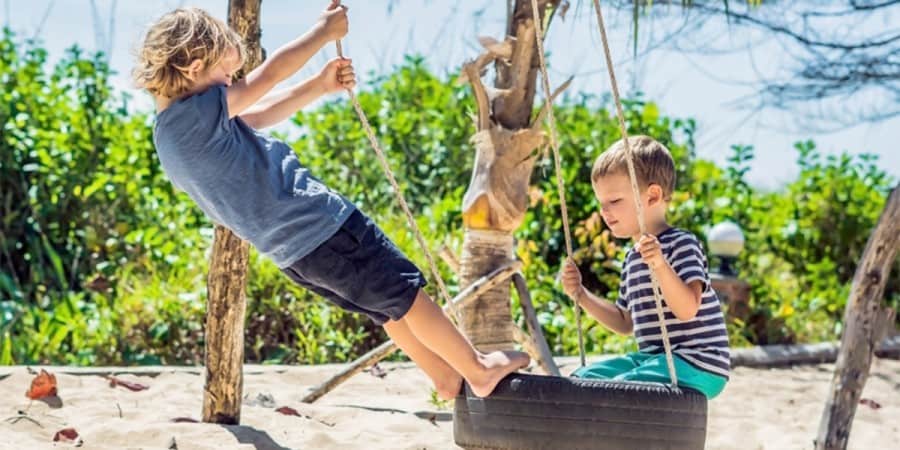
Bean Bag Activities
Use simple, easily made, or purchased bean bags for activities the whole family can enjoy. They can be used indoors or out to strengthen large motor skills. Here are just a few gross motor activities for preschoolers and toddlers.
 Bean Bag Over & Under
Bean Bag Over & Under
- Start with a bucket of bean bags (balloons, balls, or other objects) at the front of the line and an empty one at the end of the line.
- Line the kids up and have them pass each bean bag to the child behind.
- First overhead “over” and then between their legs “under.”
- Continue passing “over,” and then “under” until the last child places the bean bag in the bucket.
- There are two options: either have the last child run to the front of the line and start it again, or everyone stays in place.
- Continue until all the bean bags have been moved to the empty bucket.
 Bean Bag Toss
Bean Bag Toss
- Once your toddler has mastered the “pass.” Move on to the “toss.” Have your children take a step back and gently toss it back and forth to one another.
- Try tossing them into a bucket, basket, or another container. As your child’s skills increase, you can use a smaller basket or move it further back.
- See how far they can toss them. Your child can compete with themselves, attempting to throw it further each time. Or how many baskets they can make in a row.
 Bean Bag Balance
Bean Bag Balance
- This time, have your child balance a bean bag on their head while walking in a circle or along a straight line. You can use a rope, hose, or anything you have handy to mark the path to follow. Change the route, often to increase the difficulty.
- For another variation, have your child crawl along the line, balancing the bean bag on their back.
 Bean Bag Hop
Bean Bag Hop
- In this game, your kids will carry the bean bag from one side of the yard (or room) to the other while hopping, running, jumping, skipping, or crawling.
 Bean Bag Catch
Bean Bag Catch
- While standing in one spot, have your preschooler gently toss a bean bag into the air and catch it. Record how many times in a row they can catch it. Next time, see if they can break their record.
 Bean Bag & Spoon Race
Bean Bag & Spoon Race
- In this version, balance a bean bag on a wooden spoon. Either set up a straight race where everyone races at once to the finish line. Or complete an alternating relay.
Large Motor Activities Using Balls
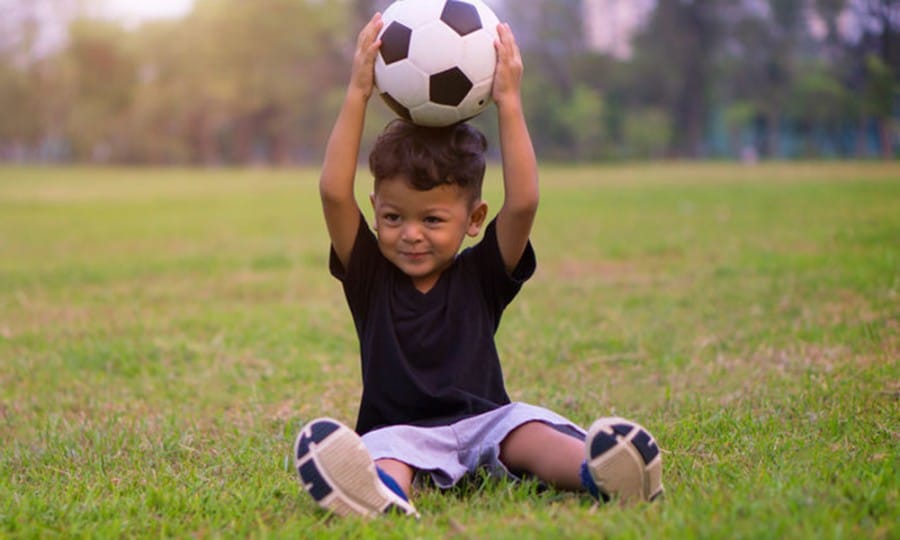
Keeping a supply of balls on hand is a sure way to get your kids moving. Think large, small, soft, and lightweight. The more variety, the better. See how you can build gross motor coordination with balls.
 Ball Rolling
Ball Rolling
- Have your toddler sit with their feet out in front and legs spread apart. Now, you sit across from them in the same position. The distance from your child will depend on their ability.
- Roll the ball to your child while they try to stop the ball before it hits them. They need to watch the ball and coordinate their hands together to stop it.
- Now roll the ball through the “tunnel.” Stand up and step back a bit. Stand with feet apart like a “tunnel.” Have your toddler or preschooler roll the ball through your legs. As they master the skill, continue to step further back and move your feet closer together to narrow the “tunnel.”
 Backyard Bowling
Backyard Bowling
- Set up something to use as bowling pins, like plastic cups. Or recycle your water bottles, milk cartons, or seltzer cans. Fill the bottoms with sand or water for stability. Ideally, you want them sturdy enough to stack but light enough to be knocked over with a ball.
- Once the “pins” are set up, have your child kick or roll a ball to knock over the pins. Use the number of pins appropriate for the age and development of your toddler or preschooler.
Beach Ball Fun
Beach balls make great props for gross motor activities. They are soft, and you can inflate them at varying levels to make them easier to catch and throw. As your toddler or preschooler’s skills increase, you can inflate them more, making it more challenging to catch. Here are a few gross motor activities for kids to try.
 Shoot Baskets
Shoot Baskets
- Set up a large laundry basket, tub, or box, and have your toddler shoot “baskets.”
 Target Practice
Target Practice
- Place a hula hoop on the ground like a target and have your child roll the ball into the circle.
 Through The Hoop
Through The Hoop
- Hang a hula hoop and have your preschooler toss the ball through the hoop.
Gross Motor Activities With Giant Blocks
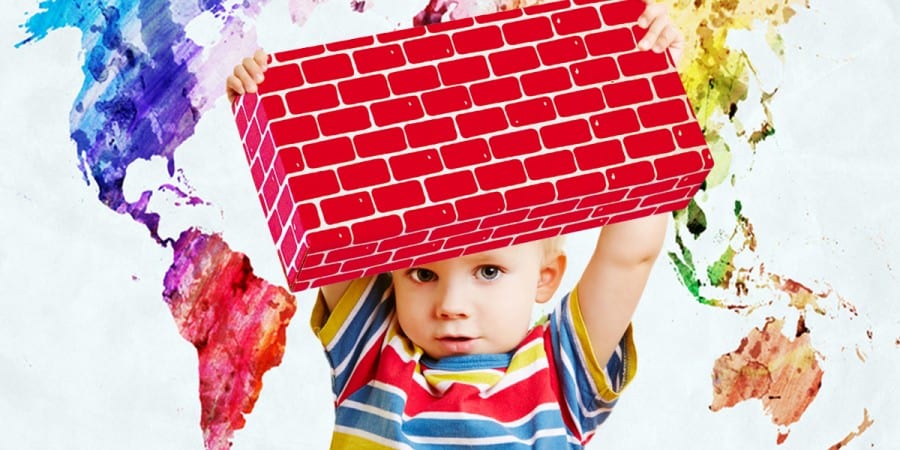
Giant blocks are open-ended, extra-large, and sturdy blocks perfect for gross motor development. You can incorporate them into the fun gross motor development activities below because they are light enough for easy lifting, carrying, and stacking.
 Obstacle Courses
Obstacle Courses
- Giant building blocks are perfect for building an obstacle course. Kids can move them from one spot to another and climb over or under them when stacked.
- Add in cones, hula hoops, a climbing triangle, or tunnels for extra fun.
- Be sure to include various activities that require crawling, balancing, jumping, throwing, climbing, and running.
 Jumbo Blocks Relay
Jumbo Blocks Relay
- Line your kids up with a stack of jumbo blocks.
- Have the first child take a block and carry it to a spot across the yard or room. Then, run back to the end of the line.
- The next child in line takes a block and stacks it on top of the first block, and runs back.
- Continue until all the blocks are moved and stacked. The first one finished is the winner.
Gross Motor Skills Activities With Balloons
Blow up some balloons, at least two or three per person (just in case of breakage). For extra summer outdoor fun, fill the balloons with water—balloons, whether filled with air or water, work great in relays and obstacle courses, too. Now, test out a few of the gross motor skills activities.
 Balloons In The Air
Balloons In The Air
- Toss the balloons up into the air, keeping them off the ground—record who can keep them in the air the longest.
 Balance The Balloon
Balance The Balloon
- Have your child walk across the room, balancing the balloon on their head, under their neck, between their knees, or on their outstretched arms.
 Balloon Volleyball
Balloon Volleyball
- Set up a makeshift “net.” It can be as simple as creating a line with a rope. Now, have your kids hit the balloon back and forth across the “net.”
 Balloon Soccer
Balloon Soccer
- Tip an empty laundry basket or cardboard box on its side for a goal. Then, let your kids kick the balloon into the “goal.” Record how many goals they can make in the “X” amount of time.
 Balloon Pop
Balloon Pop
- When finished with the balloons, let your kids pop them—this is a fun way to get their whole bodies moving.
Easy Activities For Gross Motor Skills Development
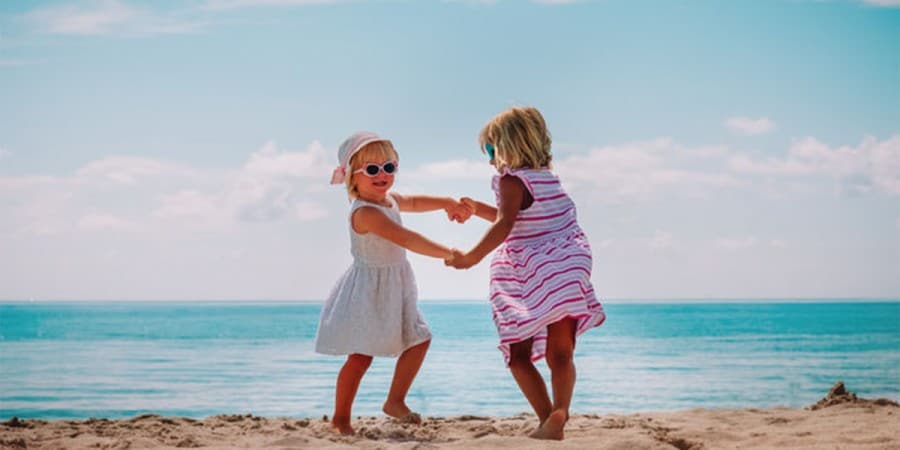
Check out these quick and fun gross motor activities for preschoolers and toddlers that may be played inside or out.
 Actions Jar
Actions Jar
For those times, you just need to remove the wiggles from your toddler or preschooler, and create an action jar. These are perfect for a day of errands or a road trip. You can use an empty jar, basket, or whatever container you have on hand. The idea is to keep it portable so you can take it on the go.
Make some action cards with quick movements requiring no equipment. Add them to the jar (or whatever you are using), and you are all set. Take them along and complete a movement each time you make a stop.
Here are a few suggestions of movements to add to your jar:
- Touch your knees and then the sky “X” times.
- Sing one of the childhood songs with actions.
- March, like a soldier counting to “X.”
- Do “X” jumping jacks.
- Do “X” arm circles.
- Jump in place “X” times.
 Animal Relays
Animal Relays
Complete a relay game using animal gross motor activities. Be creative, and let your children help you decide how to complete the action.
Here are a few suggestions to get you started:
- Crawl Like A Crab
- Fly Like A Bird
- Hop like A Kangaroo
- Leap Like A Frog
- Slither Like A Snake
- Stomp Like An Elephant
- Waddle Like A Penguin
- Walk Like A Bear
 Childhood Gross Motor Games
Childhood Gross Motor Games
Do you remember playing any of these when you were a kid? How about sharing one of your favorite childhood games with your child?
- Freeze Tag
- Simon Says
- Red Light, Green Light
- Leapfrog
- Hopscotch
- Red Rover, Red Rover
- Hide & Seek
 Sing Classic Action Songs
Sing Classic Action Songs
Here are some classic childhood songs with movements. They are ideal for getting out some of the wiggles when stuck inside.
- Head, Shoulders, Knees, And Toes
- The Hokey Pokey
- If Your Happy & You Know It
- Ring Around The Rosie
- I’m a Little Teapot
- Teddy Bear, Teddy Bear, Turn Around
 Spell Your Name Activity
Spell Your Name Activity
Create a gross motor movement for each letter of the alphabet. Then, have your child spell out their name, completing all the moves. For example:
- A – do “X” summersaults.
- B – hop like a bunny “X” times.
- C – balance on your right leg, counting to “X.”
- And so, on…. Of course, you want to create the activities according to your child’s abilities. You can also spell out other things to add variety.
One smart way to work on your child’s specific skills is to set those movements to the letters in their name. For instance, let’s say your child’s name is BEN, and he needs to work on balancing on his left foot. You could assign that gross motor movement to the letter “B.” Be sure to change up the actions periodically to keep things new.
 Walk The Line
Walk The Line
Painter’s tape is one of those items that has found a new purpose in the world of toddler and preschooler activities. For most surfaces, it is easily put on and taken off (be sure to test your surface in a hidden spot before using.)
- Create some lines using painter’s tape (test your surface first). If outside sidewalk chalk works, great! You will want to create some straight, curvy, and zig-zag lines. Using different colors for each type of line helps out.
- Have your kids “Walk The Line” with one foot in front of the other, balancing themselves.
- Other variations to try include: walking backward, sideways, taking small steps, or giant steps while walking on the line.
Outdoor Gross Motor Activities
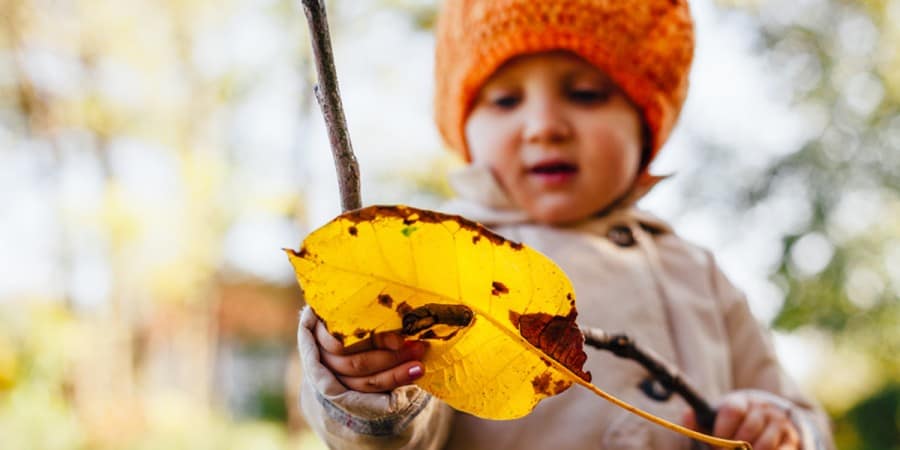
Nothing is better than heading outside for some outdoor gross motor activities for preschoolers and toddlers. The fresh air, sunshine, and moving those large muscles are the perfect way to bust up all that energy!
 Ladder Jump
Ladder Jump
- Grab a ladder, whether a household ladder, a rope ladder, or one you create using tape.
- Lay the ladder flat. If using tape, place lines of tape on the ground an equal distance apart (about 12″—18″).
- Have your kids jump between the steps or lines, alternating legs or using both feet together.
- As their skills increase, they can also try stepping backward or sideways through the ladder.
 Paint The Fence With Water
Paint The Fence With Water
- Kids love anything to do with water. Grab some paint supplies, such as a paint roller, brushes, buckets, and a pan of water. Then, let them go to town painting the fence, sidewalk, or driveway.
 Scavenger Hunts
Scavenger Hunts
- Scavenger hunts of any kind can be a fun way to encourage gross motor movement activities. Just running around and finding things is enough for any toddler or preschooler. However, what about a Nature Scavenger Hunt that gets you outside in your backyard or park, getting fresh air?
Indoor Gross Motor Activities
Gross motor activities are not just for outside. There are times when we are stuck indoors and need to get our kids moving. The indoor gross motor activities for toddlers and preschoolers below are tons of fun!
 Avoid The Quicksand
Avoid The Quicksand
- Another quick and easy activity. Create a safe zone or pathway around the house using pillows or squares of colored paper.
- Then, have your child follow the path, trying not to step off the safe zone (pillows or paper) and fall into the quicksand (floor). Put on some music for added fun. Your kids can skip, run, hop, or dance their way over the route.
 Balancing Acts
Balancing Acts
- Use a stopwatch and record how long your child can balance on one foot. With each repetition, the goal is to beat their time. Switch legs.
- Try closing their eyes while balancing on one leg or balancing a bean bag on their head.
 Paper Plate “Shuffle” or “Skate”
Paper Plate “Shuffle” or “Skate”
- Have some colorful plates left over from an event? Here is a fun activity to use them up. Have your kids get down on their hands and knees with a paper plate under each one, then “shuffle” across the room.
- Or have them stand up with one foot on each plate and “skate” around—either of these can also be set up relay style.
 Other paper Plate Activities
Other paper Plate Activities
- Secure the plates in a row on the floor, alternating colors. Have your kids move around by only stepping on a specific color.
- Or have them do an activity based on the color of the plate. For example, the red plate requires “X” jumping jacks.
- Make a trail, placing the plates at varying distances apart. Then, have your kids follow the path by taking SMALL steps for the plates close together and GIANT steps for the plates far apart.
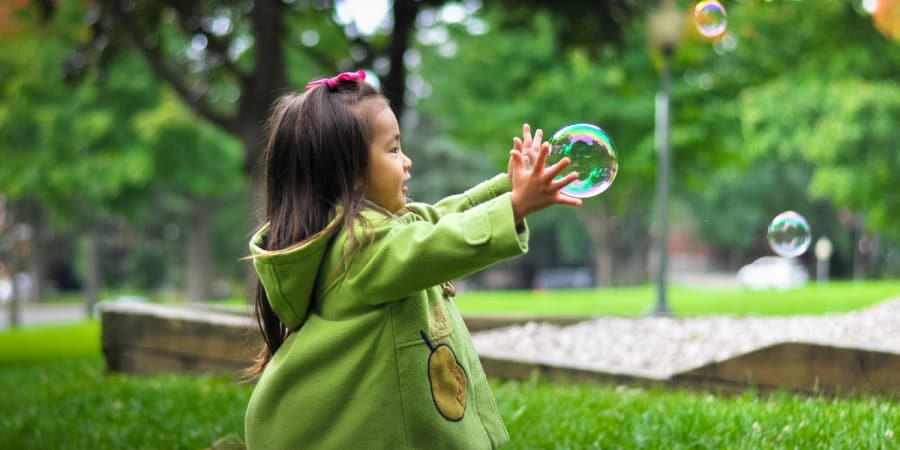
Whether you engage in a classic outdoor game, go on a scavenger hunt, or build an obstacle course with jumbo building blocks, the actual name of the game is to get your kids moving.
Simple things like moving to music, jumping rope, hopping on a trampoline, climbing a jungle gym, chasing bubbles, or just running up a hill and rolling down it all build your child’s gross motor skills.
Which gross motor activities will you try next?
Does your child have their gross motor skills mastered?
Then check out this post on fine motor activities to perfect their fine motor skills!
